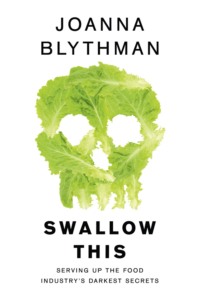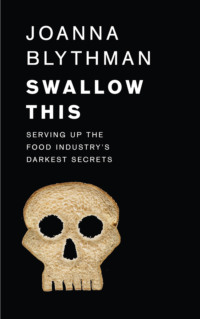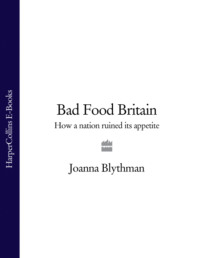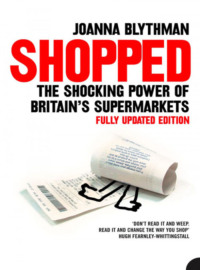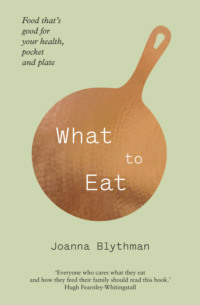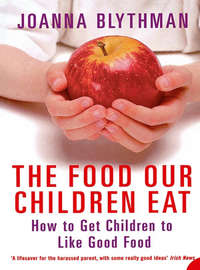
Полная версия
What to Eat: Food that’s good for your health, pocket and plate
But then there are foods that we are perfectly able to grow or farm here, at least for some part of the year, but which are routinely brought in from all over the globe via a convoluted cold chain: fruits and vegetables such as green beans, blueberries, asparagus; and meat and dairy products such as lamb, pork, chicken and yogurt. There’s no need to have such foods supplied from abroad and their air-freighting, shipping and trucking, with its energy-intensive cold chain, is undeniably environmentally destructive. They almost invariably taste inferior to the native equivalent too.
Companies involved in the importation of fresh produce argue that the air-freighted trade in premium fruit and vegetables gives producers a much needed source of income, but any jobs created are precarious ones, based on a trade that is utterly fickle. Foreign workers can, and do, lose their jobs in a split second, at the whim of a supermarket buyer who decides to cancel a contract, or because transport costs make it cheaper to source food elsewhere. And in many places, crops are being grown for export at the expense of local people. In Peru, for instance, the production of asparagus is depleting the water resources on which local people depend. From Bolivia, there are reports that local people can’t afford to eat quinoa, their staple grain, because foreign demand has sent the price shooting up. What’s more, the dividends from such trade are more likely to end up in the pockets of wealthy elites than to stay with the people who do the work.
So rather than buying into the supermarkets’ ‘the food world’s your oyster’ proposition, apply a ‘closest to home’ buying policy. Make locally and regionally produced food your first choice, English, Scottish, Welsh and Irish your second, European and Middle Eastern your third and world your last.
When you do buy foreign foods, favour those with a Fairtrade label. It guarantees that producers get a more equitable, reliable price for what they grow and also means that their working conditions are better than most. Fairtrade allows us to build better relationships with foreign food producers, relationships that aren’t mired in exploitation and neo-colonialism. Fairtrade products aren’t prohibitively priced. You’re talking pence, not pounds, to support this more progressive type of world trade.
If you can, buy organic products too. The use of pesticides is less regulated outside the European Union and many workers have to apply them in risky conditions that would not be allowed here. They have to work and live in an environment contaminated with toxins to provide us with food. When you choose the organic alternative, you will know that the workers in distant places didn’t have to damage their health to produce it.
Get your food variety over the year, not in a week
Supermarkets have encouraged us to think that true variety is being able to buy every agricultural product on the planet 365 days of the year. This expectation is not environmentally sustainable. To add insult to injury, it is also extremely monotonous because the selection of food on offer doesn’t ever seem to change.
A more refreshing approach is to get your food variety over the course of the year, and let it be dictated by the seasons. This is how people used to eat. You feast on a glut of one thing when it is in season and eat it until it is coming out of your ears. Just when you are beginning to think enough is enough, it will disappear again to be replaced by some other food that feels refreshingly ‘new’ and this will often invigorate your cooking ideas. And so the cycle continues. This way, your diet is constantly changing and you will be eating food that suits the time of year and the weather: clementines at Christmas, asparagus in spring, berries in summer and sweet root vegetables in autumn and winter.
Don’t eat crops that trash the planet
Precious natural habitats all over the world are being cut down at an alarming rate to make way for large, intensively farmed plantations of soya and palm oil. Soya is used to provide the protein element in the feed of factory-farmed livestock. Both soya and palm oil are ubiquitous ingredients in thousands of common processed foods that we eat every day.
From the rainforest of Amazonia, through the Cerrado grassland savanna of central Brazil to the swampy tropical forests of Indonesia and Malaysia, these crops are powering massive habitat destruction. The impact on wildlife has been devastating. Magnificent species, such as the Borneo orang-utan and the Sumatran tiger, are now endangered because the habitat that sustains them is rapidly disappearing. These habitats are rich in biodiversity, not only in the form of animal and bird species, but also in plants. Such biodiversity is already alarmingly rare. We cannot afford to lose any more of it.
These vital habitats also act as massive carbon sinks, absorbing and storing potentially damaging carbon dioxide from the atmosphere. When these habitats are dug up to plant soya and oil palm, this carbon is released into the atmosphere, accelerating the pace of global warming.
Many people feel appalled by the destruction of our natural world, but feel powerless to do anything about it. One contribution is to stop buying products that contain soya and palm oil. Environmental groups have tried to set up systems to identify more sustainably grown soya and palm oil, but these have been hijacked by powerful companies active in these industries. For the time being, there’s good reason to strike both soya and palm oil off your shopping list.
Understand the benefits of organic food
Don’t fall for the line that organic food is just a trendy lifestyle choice for the neurotic rich. There’s nothing new or modish about organics. Until 1950, all the food we ate was organically produced. It is organic food that should be considered as ‘normal’ not the Johnny-come-lately, factory-farmed, industrial equivalent.
These days, there are many compelling reasons for buying organic food. It will almost never contain the residues of pesticides that are commonly found in food grown with the aid of agrichemicals. Just six pesticides are approved for organic farming and these can only be used in extremely limited circumstances. Conventional farmers have over 300 at their disposal and use them routinely. The powers-that-be parrot the food industry line that we should not be the slightest bit alarmed that our food regularly contains residues of toxic pesticides because they are all below ‘safe limits’. But pesticides are poisons. They are designed to kill things. Surely the only truly safe limit would be zero? Why eat toxins if you don’t have to?
The list of additives that can be used in organic food is small – just 32 of the 290 additives permitted in Europe. Only additives derived from natural sources such as lecithin and citric acid are allowed and no artificial preservatives, colourings or flavourings are acceptable. Among the additives banned are those that have been linked to health problems. So if you are buying processed foods, the organic sort won’t contain any dodgy ones.
GM (genetic modification) is not allowed in organic food production and organically reared livestock cannot be fed on GM feed. Evidence is emerging to suggest that GM crops increase the use of pesticides, produce super-weeds and super-pests and compromise animal and, possibly, human health. When you choose organic food, you have a cast-iron guarantee that your food is GM-free.
As well as missing out on the bad stuff, you may be getting more of the good stuff when you buy organic food. Some research suggests that organic foods, such as milk and strawberries, have higher levels of vitamins, minerals and other healthy micronutrients.
Organic standards for raising livestock are the most humane, animal-friendly sort around. Organic farming methods encourage and protect wildlife. Chemical-dependent agriculture, on the other hand, has been shown to harm and deplete it. For all these reasons, there is a lot to be said for eating organic food when you can.
You don’t have to get hung up on eating 100 per cent organic though. There are many high-quality, wholesome foods around that do not come with organic certification – such as grass-reared meat, game, wild fish and hand-made cheeses.
Organic food is cheapest when bought direct from a farmer or producer, either via a box scheme, or at markets and farm shops. This sort of organic food will often cost less than the non-organic equivalent. But because most organic food costs more to produce and doesn’t come direct from the producer, it will tend to be more expensive than the basic non-organic equivalent. That said, it may sometimes cost less than premium non-organic products, so don’t always assume that organic will automatically be more expensive. Every now and then, compare like with like. You may get a pleasant surprise.
If you have to watch what you spend, and would like to buy more organic food but can’t see how to afford it, then you can prioritize your purchases. There are stronger arguments for some organic foods than others. It is more important to spend money on organic pork or chicken, for instance, than it is to buy organic lamb or beef.
The extra you will have to pay for some organic products is more manageable than for others. Items such as organic flour, milk, bread and butter can be quite affordable, as can fresh seasonal products, such as salad leaves and herbs. If you do compare prices, you may actually find that many organic brands are cheaper than their conventional equivalents and are often on special offer. Throughout this book, the foods that you might want to prioritize for organic purchases are flagged up.
Support small-scale producers and independent shops and food outlets
Supermarket chains’ commitment to small-scale foods and producers is skin-deep. At a structural level, these dinosaurs of food retailing are locked into bulk buying, globalized sourcing and centralized distribution, which favour the large supplier every time. Supermarkets just aren’t equipped to respond to fleeting availability or to handle foods that are produced in small numbers, even if they truly wanted to. What this means is that if everyone keeps shopping only in supermarkets, many of our smaller-scale foods will disappear because supermarkets do not deem them reliable, consistent or significant enough in turnover terms to merit stocking them.
If you love interesting foods, and want to ensure that you will always have real diversity in your shopping basket – items such as rare-breed meat, traditional fruits, distinctive local specialities with a sense of place, more unusual varieties of fruits and vegetables that keep precious biodiversity alive, artisan farmhouse cheese and naturally grown produce that haven’t been groomed to fit the big chains’ body fascist cosmetic grading requirements – then make a conscious effort to do some of your shopping in alternative outlets like markets, farm shops and independent shops. By shopping this way, you lend your valuable support to producers who are maintaining our food traditions and heritage and people who are offering something refreshingly different to the cloned supermarket offer. You also help keep your locality alive and more vibrant with shopping outlets that offer an alternative to the homogeneity and sameness of the over-dominant retail chains.
Recalibrate your attitude towards the cost of food
There’s lots of ‘cheap’ food on offer. Well, cheap that is, as long as you ignore its less obvious costs, such as its impact on your health, the misery of farm animals, the poor pay and conditions endured by workers in the global food industry, and environmental damage. Like clocking up debits on an out-of-control credit card, cheap food is stacking up a debt that we will have to pay at some future point.
Many people would like to buy something better, but feel that cheap, mass-produced food is the only type they can afford. More wholesomely and ethically produced food has a reputation for being expensive food, even though it usually represents much better value for money.
But there are a number of strategies that you can employ to keep down your overall spend, yet still eat higher-quality, more ethical food, simply by readjusting and rethinking certain strands in your diet. If, for instance, you cut out expensive, ready-made food, such as lunchtime sandwiches, pricey ready meals and pre-washed vegetables, you can free up a surprising amount of money to spend on something else: a free-range or organic chicken, say, instead of a factory-farmed one. By reducing the amount of meat you eat, choosing the less expensive, but arguably more delicious cuts, and bumping up the proportion of vegetables in your diet, you can afford to eat better meat and still be quids in. If you plan your meals in advance, you will almost certainly waste less and the money saved can go towards buying better ingredients. And of course, if you cut out sweet drinks, squashes, sodas and bottled water, and make tap water your default thirst-quencher, then you will instantly be awash with money that allows you to trade up on something else you regularly eat: a nicer hand-made cheese, some Fairtrade bananas, a special olive oil for salads. Throughout this book, ways to improve the quality of what you eat without spending more money overall are flagged up.
Save money outside the supermarket
Never assume that supermarkets are the cheapest place to shop. They most certainly are if what you want is processed food, say a bumper pack of crisps or a two-for-one offer on fizzy drinks. No corner shop or indie outlet can beat them on that stuff. They also offer bargain-basement prices on the handful of ‘known value items’ – such as bananas, milk and white bread. They price these products at an unrealistically low level to surround everything else they sell with a halo of value and convince us that they are cheaper than their competitors. But there’s one very important thing to understand about supermarkets: they aren’t cheaper places to shop for fresh, unprocessed foods. You will routinely pay more for fish, meat, fruit and vegetables in supermarkets than you will at the fishmonger’s, the butcher’s or the greengrocer’s. On some products, the mark-ups charged by supermarkets are astronomical. Try comparing supermarket spice prices with those in your average Asian grocery store. Or check out the cost of supermarket lemongrass, spring onions or fish sauce against the Chinese supermarket. Supermarkets routinely charge eye-popping premiums on any food that isn’t mass-market or industrialized. If you are looking for real fresh food, then take your business elsewhere.
Don’t become an ideological eater
A number of different considerations now influence us when we are deciding what we eat. This is a positive trend. What’s clever about swallowing mystery food without giving any thought to what it may be doing to you, food producers and the planet? But while some understanding of these concerns can undoubtedly inform and influence your choice of food, it is important not to become over-cerebral and to remember that, first and foremost, food should be a life-enhancing pleasure.
There’s no need, for instance, to cut out meat from your diet entirely just because you are worried about the depletion of the rainforest or the conditions of farm animals. Many species of fish are below safe biological limits, but don’t draw the conclusion that there is no fish left in the sea that you can eat. Nor is there any necessity to commit to eating only politically correct, right-on food. People who seriously suggest this are driven by ideological goals and you can’t assume that they have any inherent love for, or great understanding of, food. Similarly, it’s spirit-crushing and life-denying to sign up for an extremely limiting diet of 100 per cent healthy food. It’s only human, every now and then, to eat things you know aren’t that great, just because you like them.
It’s good to be a thoughtful eater, but if you are excessively ideological in choosing what you eat, it’s too easy to become neurotic and end up with a rapidly diminishing list of food you are prepared to eat. Instead, just try to head in the right general direction, but don’t make a fetish of it. Be led by the stomach as well as the head. Eating well can seem complicated, but, actually, it’s simple.
10 ways
to save money on
food without compromising
your principles
As your till receipts will testify, the cost of food has climbed alarmingly of late. And it looks as if higher food bills are here to stay, not just for years, but for decades. A series of global factors – climate change, a growing world population, shortage of oil, market speculation and a weak pound – are combining to drive up the price of food. The underlying trend is that food prices will continue to rise in real terms for the next 30 years. So we have moved into a period when food will become a much more significant item in the household budget.
It’s wearing having to worry constantly about the bottom line, but when money is tight there’s no need to abandon your ethical and progressive instincts and buy the cheapest (and potentially nastiest) food on offer, or fill up on stodge. Instead, look on rising prices as an opportunity to hone your ‘domestic economy’ skills – yet still eat well – by employing these strategies:
Waste nothing – use up every last bit of food you buy
Cut out waste by shopping as frequently as possible, and try to buy only what you need for the next couple of days. Never bin food that could have a further use. For instance, sour milk makes great pancakes and scones, old bread gets a new lease of life when made into breadcrumbs, salads and puddings. Eggs that are past their ‘use by’ date can be safely eaten in recipes where they will be well cooked, such as a cake or fritatta. Don’t throw away fat from meat or poultry roasts – use it for frying. Make old fruit into crumbles and compotes and tired vegetables into soups and purées. Save the leathery ends of Parmesan wedges to flavour soups and sauces.
Be super-suspicious of supermarket promotional offers
Three-for-two deals, buy-one-get-one-free, multisavers and more of that ilk need to be treated with deep scepticism. Their whole purpose is to get you to buy more food than you might otherwise do. With non-perishable foods, they might possibly represent a chance to stock up on products that you’ll get through in the fullness of time, although, if you’re controlling your weekly budget carefully, it might be better to buy only what you need, as and when you need it, rather than stockpiling potentially useful foods. But apparently good deals on fresh food rarely save you money. They not only coax more money than you had intended out of your pocket, they also encourage you to overbuy. Chances are that some of what you pick up will be wasted because it was more than you really needed. A promotional deal isn’t a bargain if it ends up in the bin.
Check out cheaper sources for foods you buy regularly
If you tend to shop for food on auto-pilot in the same place, compare prices in other outlets once in a while. For example, fruit and vegetables generally cost much less in greengrocers and markets than in supermarkets; certain products, like Parmesan, are often significantly cheaper in foreign discount chains; spices are much better value in Asian shops; nuts often cost less when bought in larger quantities in Chinese supermarkets; organic vegetables and eggs from a farmers’ market or box scheme may well be cheaper than the equivalent in supermarkets.
Stick with meat from free-range animals rather than switching to factory-farmed, but consider reducing the quantity you eat
In a typical stew or curry recipe, for instance, cut the quantity of meat specified by a half to a third, and make up the difference with vegetables or pulses. Bone up on how to cook cheaper, but delicious, cuts of meat such as beef shin, pork cheeks, neck of lamb and duck legs and make a little go a long way. Choose cuts of meat with some bone and fat. They may not look as neat and tidy, but they often have more flavour and richness than so-called ‘prime’ cuts, and cost much less.
Go for cheaper, less well-known types of fish
Forget the pricy premier league species like cod, tuna and halibut and concentrate on second division species like megrim, rockfish, coley, herring and mackerel. They taste good but sell for less largely because people are less familiar with them.
Cook more food from scratch and keep processed convenience foods to the bare minimum
Unless you’re prepared to live on bargain-basement, poor value, low grade processed food, then buying convenience foods, like ready meals, is an extremely expensive, not to mention unsatisfactory, way to eat. By doing most of your own cooking you will not only improve the flavour and freshness of what you eat, but also save a mint. Ready-prepared foods constitute rotten value for money. Most of what you’re paying for is packaging and marketing.
Take lunch to work
Buying your lunch from takeaways eats into your finances in an insidious way. A drink, a sandwich and a sweet bite easily clocks up £5 a day, usually for something that’s deeply inferior to what you’d make at home. For the price of a floppy sarnie filled with rubbery cheese, you could make an infinitely superior home-made one, using decent bread and your pick of the country’s finest artisan cheese. If it’s the planning that defeats you, just scale up what you cook the night before to make sure that there’s enough left for lunch the next day. Last night’s leftovers, however random and variable, often taste even better at lunchtime.
Drink tap water
Bottled water costs anything from 500–900 per cent more than tap. Quench your thirst with this and it’s as much of a drain on your financial resources as paying up a car loan, or signing up for a private club. Give up that pricy habit and you’ll feel flush in no time. If you don’t like the taste of tap water, drink it with ice and lemon, leave it to sit in the fridge so that the chlorine evaporates, use a jug filter, or make a one-off investment in a plumbed-in water filter.
Grow any food you can and make the most of cheap, seasonal, UK-grown produce
Even if it’s just a snipping of herbs from a pot on the window sill, or some cut-and-come-again salads grown in a container on the balcony, a bit of home-grown food can not only transform your meals, it can also save you a surprising amount of money. Buy fresh, UK-grown fruits and vegetables at the height of their season when they are cheapest, and at their nutritional peak.
Forage enthusiastically whenever you get the chance
Both in rural and urban settings, there is a free larder of interesting foods at your disposal. Sniff out wild garlic leaves in city parks in spring, pick blackberries from roadside thickets in late summer, and scour the woods for wild mushrooms in autumn. Get your revenge on the ground elder in your garden by eating it.

Asparagus
If ever there was a vegetable made for indulgence, it’s asparagus. It has the thrill of luxury – no other vegetable has that Cadillac alley, platinum status. There’s no need to get too fancy with asparagus or dream up inventive ways to cook it when the old favourites have such perennial charm.
Some European countries, such as France and Germany, favour blanched white asparagus with its characteristic violet shading and yellow tips, which is grown by mounding up earth around the emerging spears to protect them from light. This type of asparagus has a taste not unlike that of salsify. The British, in company with the Spanish, prefer their asparagus green and grown in full light that gives it a flavour rather like peas. Purple and red asparagus are also popular with keen gardeners. They tend to turn green when cooked, so are better used ultra-tender and fresh, thinly sliced in salads. All shades of asparagus taste special in their own way.
Asparagus ranges in size from the young, slender ‘sprue’ to the thicker ‘kitchen’ and jumbo grades that have a more developed flavour.




